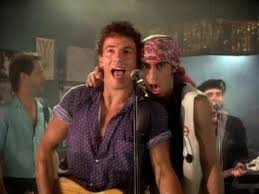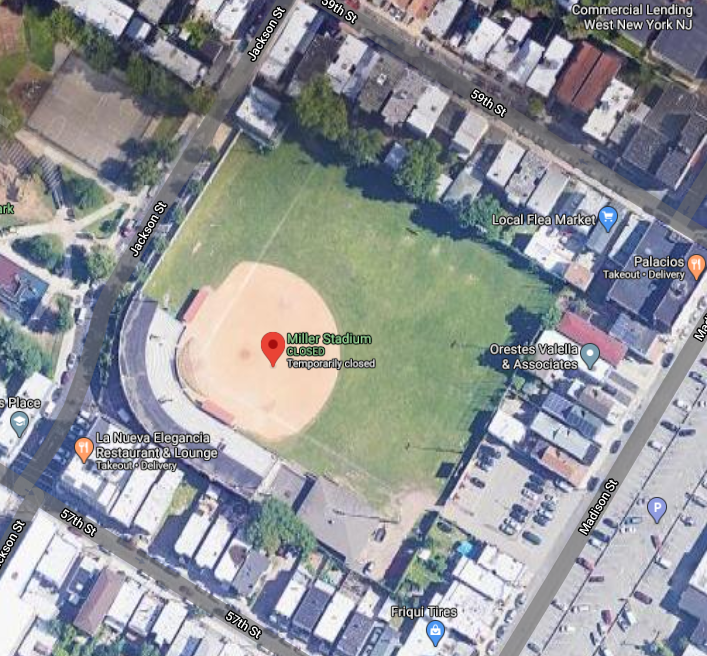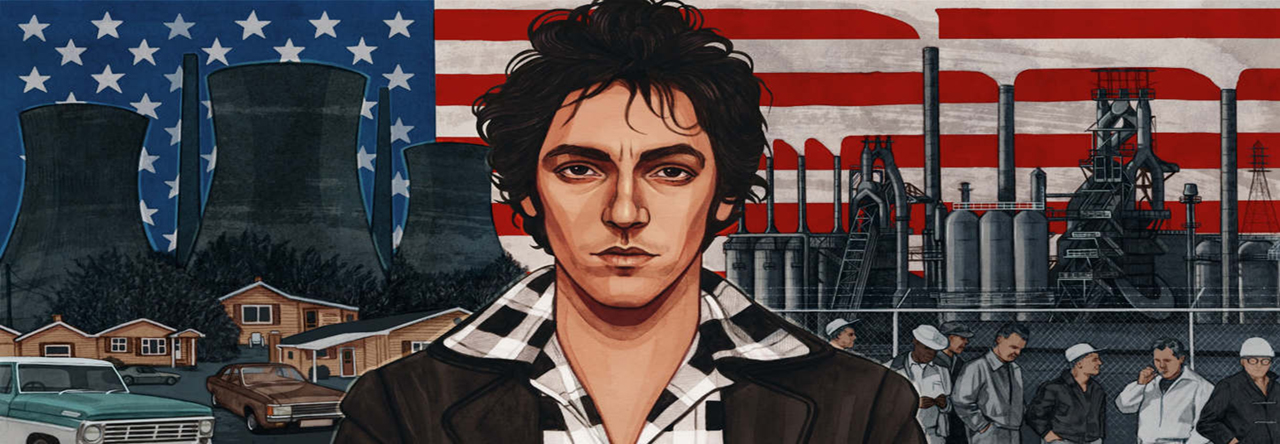The performance and narrative style music video for “Glory Days” exemplifies Bruce Springsteen’s connection to his working class audience through the representative fashion of his dress and setting, the embodiment of the song’s narrative, and breaking of the fourth-wall.

Bruce Springsteen (left) preforming in “Glory Days” music video (1985). (Picture Credit: Vevo/YouTube)
Springsteen’s staunch audience connection is garnered in part through his relatable appearance and dance while performing in his music videos and live concerts. Rosalie Fanshel asserts that Springsteen draws inspiration from Walt Whitman in fulfilling the role of an artist as creating a “sense of connectivity among Americans.” This supposed artistic duty is certainly realized in the music video for “Glory Days.” . Springsteen is dressed in a simple collared t-shirt with a few top buttons undone. Considering his audience is working class, they would likely wear something similar to go out. Consider this contrast to the Disco era of the 1970s in which people put extensive time and effort into their appearance. This point is corroborated by the times the camera points to the audience members in the music video who are dressed similar to Springsteen. In his 2009 live performance in East Rutherford, NJ, Springsteen wears loose black jeans, a t-shirt, and a simple vest. This look is mirrored by people in the crowd, sans the vest, who are dressed casually. This parallel between the crowd and the performer might seem obvious, but other bands such as KISS certainly out do their fans when it comes to garb. As the music video cuts from the performance in a bar to narrative scenes which portray Springsteen on a baseball field, his costume stays consistently casual. He wears jeans and a t-shirt as he pitches a baseball with full athletic effort. This markedly non-dynamic choice of clothes accentuates his dedication to the blue collar uniform. As well as his dress, Springsteen’s demeanor mirrors that of his audience. Throughout the entirety of the music video and the live concert, Springsteen generally does not perform any complicated dances or highly choreographed sequences. This too is mirrored by both the scripted and live audiences. There are no dance circles or rhythmically undulating concert-goers that are more reminiscent of some psychedelia concerts. Springsteen’s movement style and appearance throughout his performances interplays with their settings to further reflect and connect to his fans.

Miller Park Stadium in West New York, New Jersey where scenes from the “Glory Days” music video were filmed. (2020 satellite image from Google Maps.)
The music video is split between multiple settings including a baseball field, a bar, and a house, all of which show decorations and environments accessible to and frequented by those of a blue collar class. The bar in which Springsteen performs is decorated with neon beer signs, an array of framed pictures, and a very low stage with little separation from the audience. Here we hear diegetic sound from his performance. This casual presentation reflects the attitude of the people in the bar, many of whom are not giving their full attention to the performance. Some are playing pool while others are having their own conversations. Springsteen clearly is not elevating himself physically or metaphorically above his audience. The baseball field on which Springsteen plays is located in West New York, New Jersey which is a middle class area. The baseball field is apparently public and nestled in the city, i.e. it is an accessible location. The house in which Springsteen is watching television has a small television and a medium sized bedroom. The furniture is nothing extraordinary nor dilapidated. At both the baseball field and the bar we hear nondiegetic music playing. This is unlike many artists who portray glamorous or aspirational lifestyles well above the socioeconomic boundaries of their fans. The relatable setting from the music video is furthered by the narrative and physical portrayal by Springsteen.
